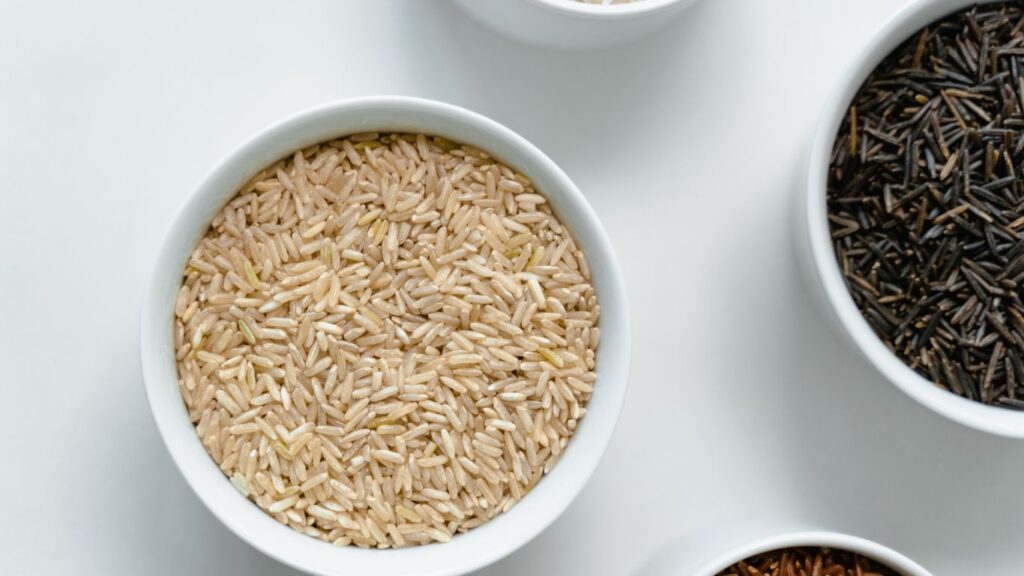Rice, a dietary staple for billions of people around the world, plays a significant role in various cuisines. However, when it comes to weight loss, choosing the right type of rice can be crucial. Brown rice and white rice are two popular varieties, each with its unique nutritional profile and potential impact on weight management. In this comprehensive guide, we’ll explore the differences between brown rice and white rice, their respective effects on weight loss, and provide evidence-based recommendations to help you make informed dietary choices.
Understanding Brown Rice and White Rice:
Brown Rice: Nutrient-Dense Whole Grain
- Brown rice is a whole grain that retains its outer bran layer, germ, and endosperm, making it more nutrient-dense compared to white rice.
- Rich in Fiber: Brown rice is an excellent source of dietary fiber, including both soluble and insoluble fiber. This high fiber content contributes to a feeling of fullness and helps regulate digestion, promoting satiety and aiding in weight management.
- Micronutrient Content: Brown rice is packed with essential vitamins and minerals, such as magnesium, phosphorus, manganese, and B vitamins, including niacin, thiamine, and vitamin B6. These nutrients play vital roles in metabolism, energy production, and overall health.
White Rice: Refined Grain with Reduced Nutritional Value
- White rice undergoes processing that removes the bran and germ layers, stripping away much of its fiber, vitamins, and minerals. What remains is the starchy endosperm.
- Lower Fiber Content: Compared to brown rice, white rice contains significantly less fiber, particularly insoluble fiber. This lack of fiber may lead to faster digestion and absorption, potentially causing spikes in blood sugar levels and reduced feelings of fullness.
- Reduced Micronutrients: The refining process removes many essential nutrients from white rice, including fiber, vitamins, and minerals. While some white rice varieties are enriched with iron and B vitamins, they still lack the diverse nutrient profile found in brown rice.
Weight Loss Implications:

Satiety and Hunger Control:
- Brown Rice: The high fiber content in brown rice promotes feelings of fullness and satiety, helping to control appetite and reduce overall calorie intake. This can be beneficial for weight loss efforts by preventing overeating and promoting portion control.
- White Rice: With its lower fiber content, white rice may be less effective at promoting satiety and controlling hunger compared to brown rice. Consuming white rice may lead to quicker digestion and a shorter duration of fullness, potentially increasing the likelihood of snacking and overeating.
Blood Sugar Management:
- Brown Rice: The fiber and complex carbohydrates in brown rice are digested more slowly, resulting in gradual increases in blood sugar levels and a reduced glycemic response. This steady release of energy helps maintain stable blood sugar levels and may aid in weight management by preventing blood sugar spikes and crashes.
- White Rice: White rice has a higher glycemic index compared to brown rice, meaning it can cause rapid spikes in blood sugar levels after consumption. This may lead to increased hunger and cravings, as well as potential disruptions in insulin sensitivity, which can hinder weight loss efforts.
Nutrient Density and Overall Health:
- Brown Rice: As a whole grain, brown rice retains a greater proportion of its original nutrients, including fiber, vitamins, and minerals. Consuming brown rice as part of a balanced diet provides essential nutrients that support overall health and well-being, contributing to sustainable weight loss.
- White Rice: While white rice can be part of a balanced diet, it lacks the nutrient density of brown rice due to the refining process. Relying heavily on white rice as a dietary staple may lead to nutrient deficiencies and compromise long-term health and weight management goals.
Practical Tips for Incorporating Brown Rice and White Rice into Your Diet:
- Choose Whole Grain Options: Choose for brown rice or other whole grains such as quinoa, barley, or bulgur to maximize fiber and nutrient intake.
- Combine with Protein and Vegetables: Pair rice with lean protein sources like chicken, fish, tofu, or legumes, and plenty of vegetables to create balanced, satisfying meals.
- Practice Portion Control: Be mindful of portion sizes when consuming rice, as excessive portions can contribute to calorie intake and hinder weight loss efforts.
- Experiment with Cooking Methods: Explore different cooking methods such as steaming, boiling, or baking to prepare rice dishes with minimal added fats and calories.

Conclusion
In the debate between brown rice and white rice for weight loss, the evidence overwhelmingly favors brown rice as the superior option. With its higher fiber content, greater nutrient density, and slower digestion rate, brown rice promotes satiety, stabilizes blood sugar levels, and supports overall health. While white rice can still be enjoyed in moderation, it’s essential to prioritize whole grains like brown rice as part of a balanced diet for sustainable weight loss and optimal well-being. By making informed dietary choices and incorporating nutrient-rich foods like brown rice into your meals, you can achieve your weight loss goals while nourishing your body with essential nutrients for long-term health.
Also read: The Science of Soy: How Soy Foods Influence Muscle Growth and Recovery
